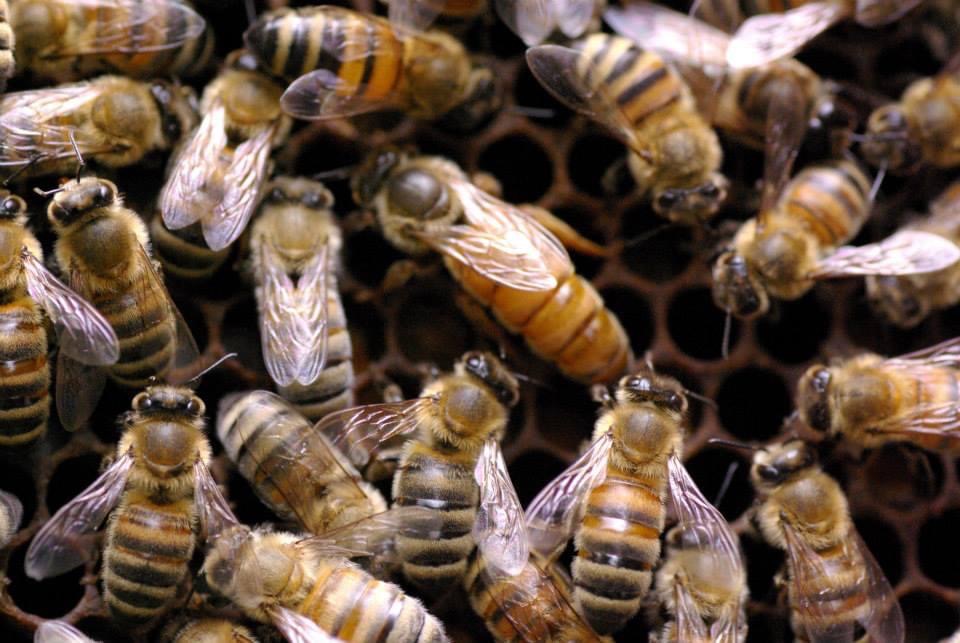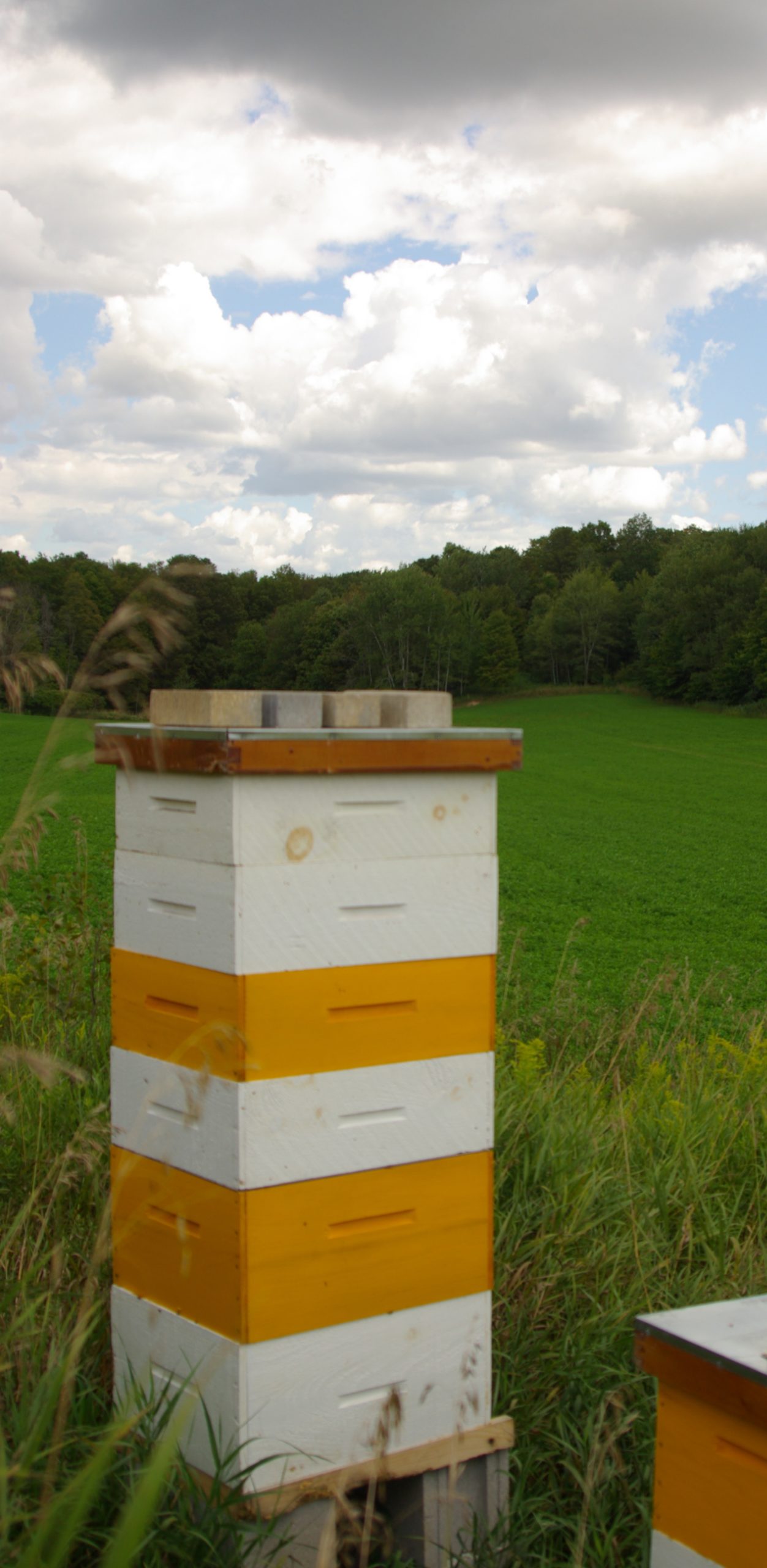Chapter 2
The Honey Bee Hive
 Warm up Questions
Warm up Questions
- How do you feel when you see a bee near you?
- Do you prefer to eat honey or maple syrup?
Reading
Listen to the reading shown below.
- Honeybees have a reputation for working hard, and the reward for their labour is very sweet! There are about 50 000 bees inside an average beehive, and that group includes one queen bee, several drones, and thousands of worker bees. All the members of the hive have jobs to do; however, the drones and the queen have limited activities. The workers have the most complicated and variable roles within the hive. These jobs are all highly organized and change as they develop into fully grown adult bees.
- The queen’s job is simple. She lays eggs, so there are new bees in the hive during the seasons of activity. She will only leave the hive once in her lifetime. It is during this one flight that the queen bee mates with drones, who are the male bees in the hive. During this mating flight, the drones complete their one and only job – to mate with the queen. After this is complete, they are no longer a part of the day-to-day life of the hive. When the queen returns to the hive after this one flight, she can lay eggs for the duration of her life. The queen also releases a chemical from her body that the other members of the hive can sense. This chemical triggers actions for the other bees in the hive. These simple jobs for the queen and the drones are important for the hive.

- The worker bees also have a very organized sequence of jobs. The workers take on new jobs as their bodies mature, and they can do more physically demanding tasks. When a new bee emerges, the first task is to eat. Mostly, they are fed by passing worker bees, but eventually they find the supply of honey and pollen and can feed themselves. Subsequently, they begin their first job in the hive. They clean. They clean the honeycomb cells, so the queen can lay more eggs. Once they are about 6 days old, they can feed the larvae that develop from the new eggs laid by the queen. When the young bee is about 10 days old, they develop the ability to produce wax. This means that they are now able to give more assistance to the hive by repairing and building the honeycomb. More honeycomb is needed through the busy summer months so that there is adequate room for eggs and honey. After gaining the ability to produce wax, the bees can also collect the pollen and nectar that other worker bees bring into the hive, hence storing it for the future. Throughout this first month of life, the new worker bees remain inside the hive.
- All the worker bees in the hive are female. The worker bee’s development of the ability to fly coincides with the need to leave the hive to eliminate waste from their body. Honeybees are extremely clean, and they never eliminate waste within the hive; workers even carry the waste from the queen to an area outside of the hive for her. Once the new worker bee flies out of the hive, she spends time learning how to fly. She does not travel far during the initial external flights. Eventually, this new worker bee will learn how to communicate through dance-like movements with the foraging bees who are collecting pollen and nectar from plants. In this cooperative manner among all the worker bees, the hive collectively will make honey. Then, the worker bee will spend the rest of her life bringing these precious materials back into the hive. Mostly, foraging bees travel a 2-kilometer range around the hive; they know when they have reached their own home because they recognize the chemical released by their queen. In the busiest summer months, a worker bee is very busy and may only live about 5-6 weeks total. Their life eventually ends when their wings become worn out, and they can no longer fly. Inevitably, a worker bee works themself to death.
- Not all worker bees become foragers. A few workers will stay in the hive to give a different contribution to the group. They work as hive guards or as attendants for the queen. Guard bees watch the hive entrance. They will fight intruders and perhaps use their stinger to harm an intruder, which also leads to their own death. The workers that attend the queen help to feed and clean or groom her. They also carry her waste out of the hive.
- So, the next time you sample the sweet taste of honey, think about the worker bees. The division of labour within the hive helps to complete the enormous task of keeping the bees alive and storing food for the cold winter months. Within the natural world, honeybees also play an important role for plants. This is a perfect example of a cooperative system.

Comprehension Questions
Answer the following questions in complete sentences.
- How many different types of bees are in a hive? What are they?
- What is the first thing a worker bee does when they emerge (are born)?
- How old is a worker bee when they develop the abliity to fly?
- How do bees communicate?
- How does a foraging worker bee know when they have reached their own hive?
- The lifespan for a worker bee varies. What influences how long they live?
- The article describes a very complicated organization of jobs within the beehive. Can you think of another species that is organized in a similar way?
Vocabulary Words
Listen to the pronunciation of the words listed below.
adequate
adult
attend
average
collect
contribution
develop
duration
eliminate
emerge
eventually
gain
hence
labour
mature
physically
role
sequence
subsequently
trigger

